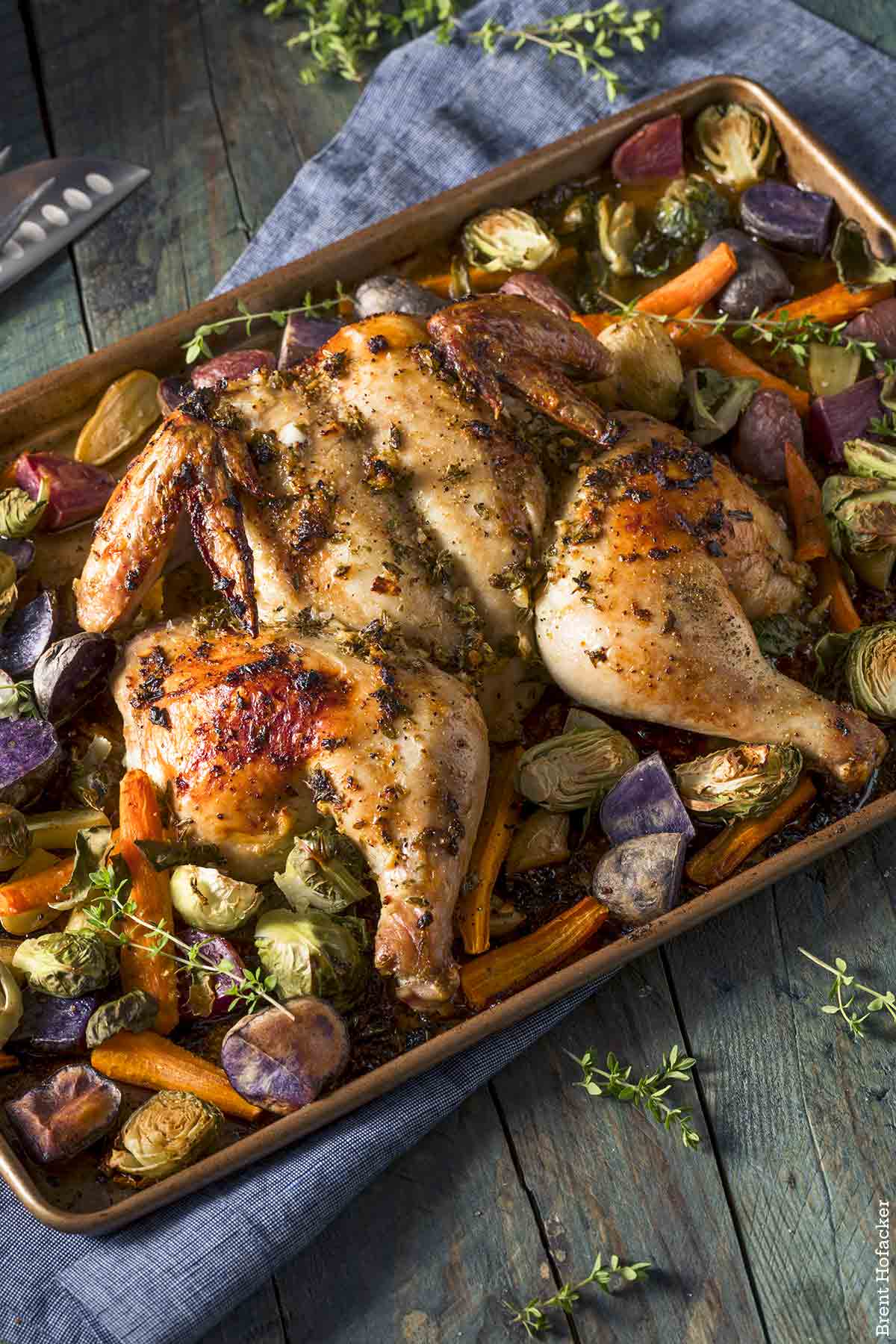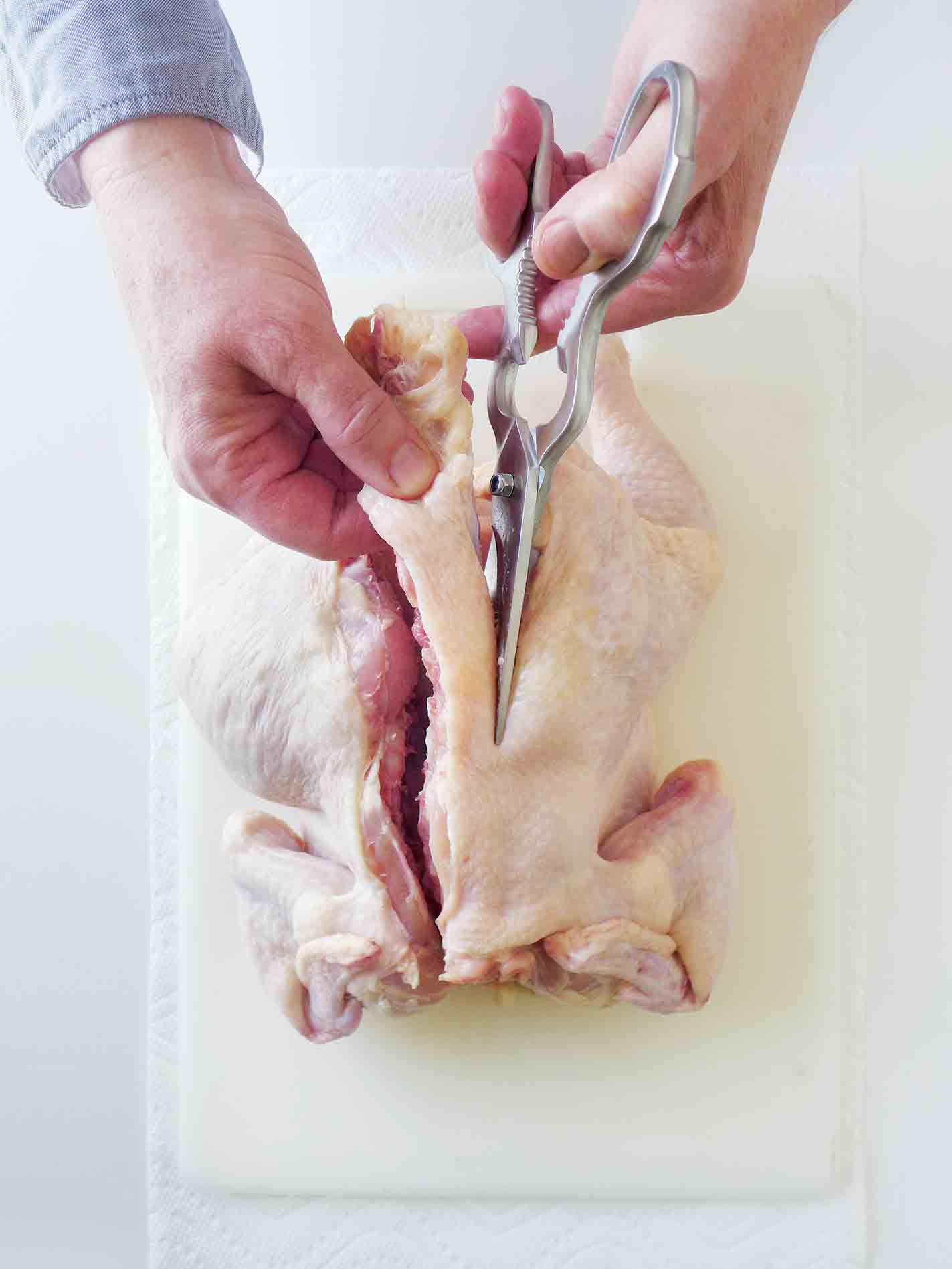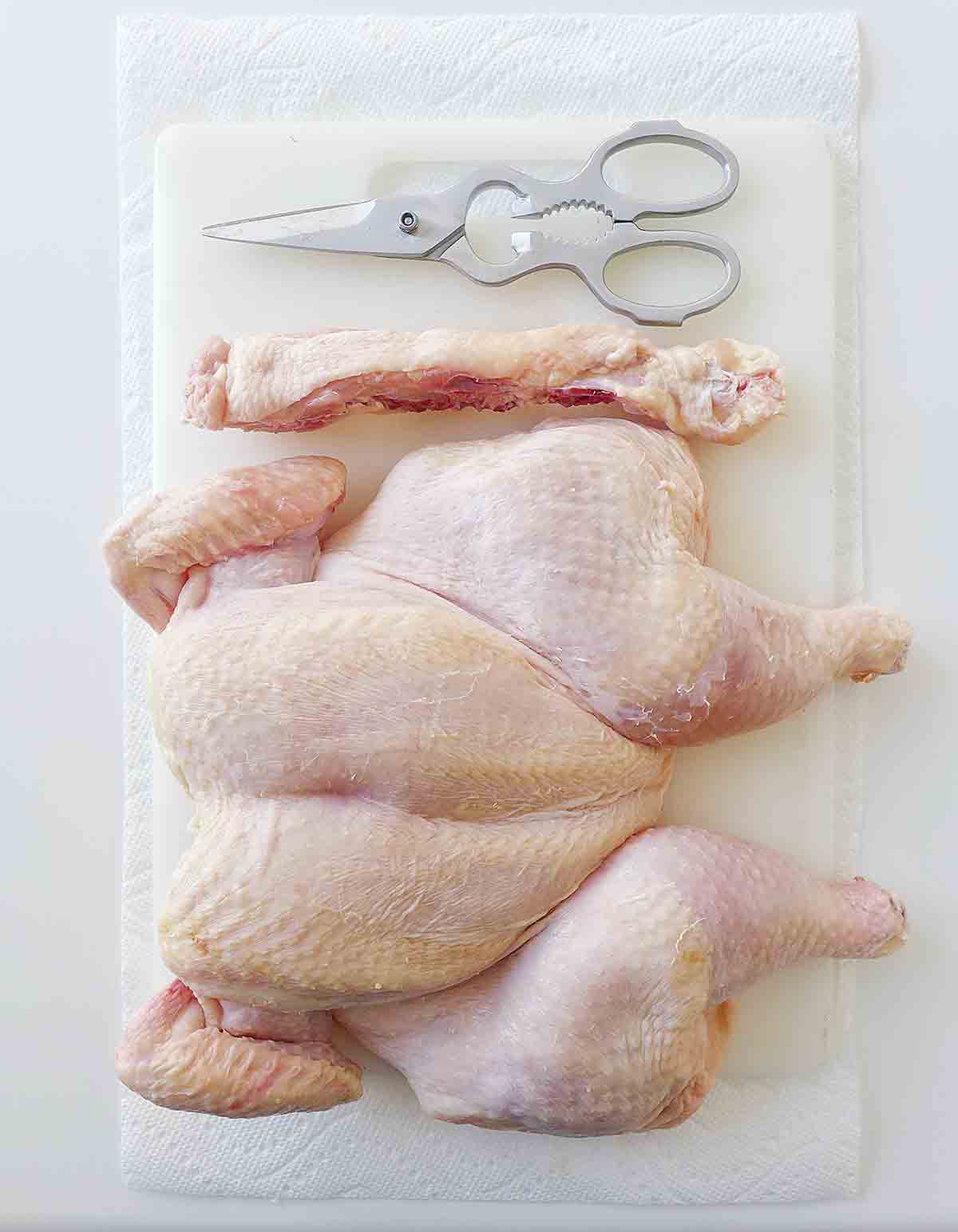
Jump To
Traditionally, a spatchcocked chicken or small bird is grilled. The bird is butterflied, or split open so it lies flat, like an open book. It makes the bird easier to handle and carve, and helps it cook more evenly. It gives more surface area for basting or slathering on compound butter. And it allows more room for stuffing seasonings under the skin. Why stop at grilling? We spatchcock chicken—as well as turkey—for roasting and broiling, as well. The process is simple, but we take precautions.
How to Spatchcock a Bird
- To split a whole chicken or small bird open, use a pair of sturdy kitchen or poultry shears. (A heavy, sharp knife or cleaver works, too, but neither offers quite the control that shears do.)
- Place the chicken breast-side down on a cutting board. Use the shears to cut out the backbone.
- Open up the chicken like a book and press on it to flatten it. Save the backbone for making a rich, simple chicken stock.











Long blades and a handle of equal or shorter length won’t give you much leverage. I’ve been spatchcocking chickens AND turkeys for a number of years and gave up on kitchen shears.
The most useful “scissors” have shorter blades in relationship to the handle. It’s an application of the principle of leverage, although I don’t think Archimedes spent time futzing around the kitchen.
I bought some aviation snips at the hardware store years ago and have been very happy with the ease of use. The added benefit is that a good pair only cost about $15 USD and will go through bones like a hot knife through butter.
Glad that you found some scissors that work for you, bkhuna. We all have our favorite weapons to use on a chicken carcass.